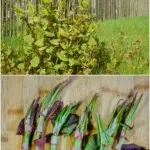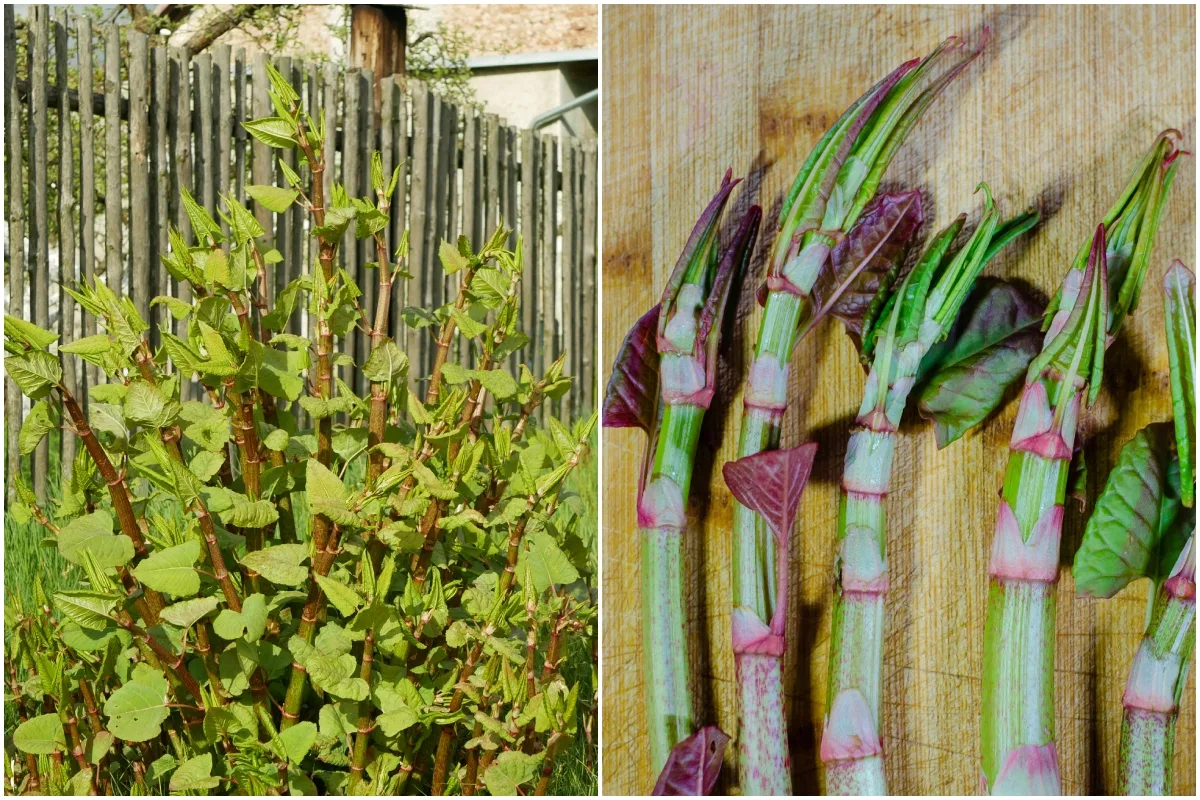
As any seasoned weed-puller knows, keeping on top of weedy growth in the lawn and garden is a never-ending grind. Some weeds are easy, yank them up once and they’re gone. Others are more stubborn, requiring a cardboard smothering to be rid of them for good.
You ain’t seen nothing until you’ve gone toe-to-toe with Japanese knotweed.
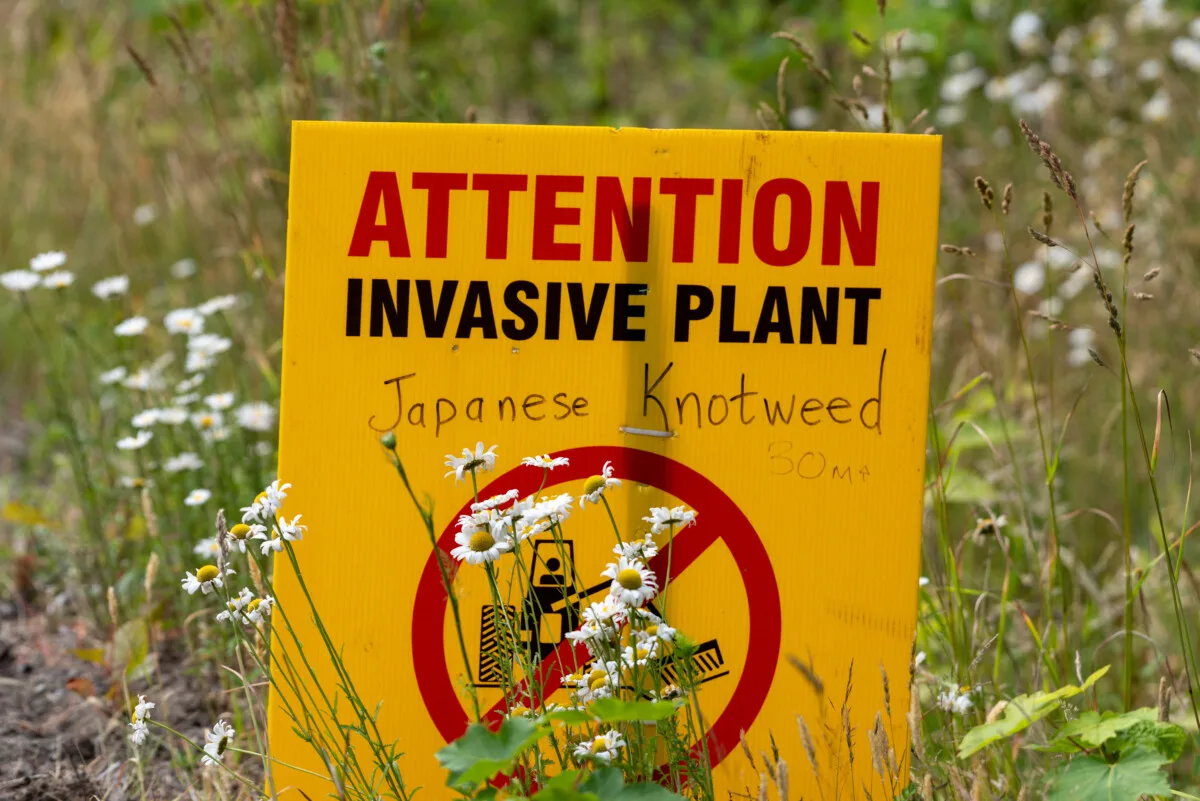
For four years, I fought the good fight against Japanese knotweed…and lost. The best I could do was beat it back and minimize its presence in my old backyard.
I pulled the young sprouts as soon as they popped up – randomly and prolifically – in the grass, along the fence, underneath the deck stairs, and in between my rows of tomatoes. Older shoots emerge in clumps and I spent untold hours digging out the knotty masses of roots – easier said than done, as these babies are entrenched.
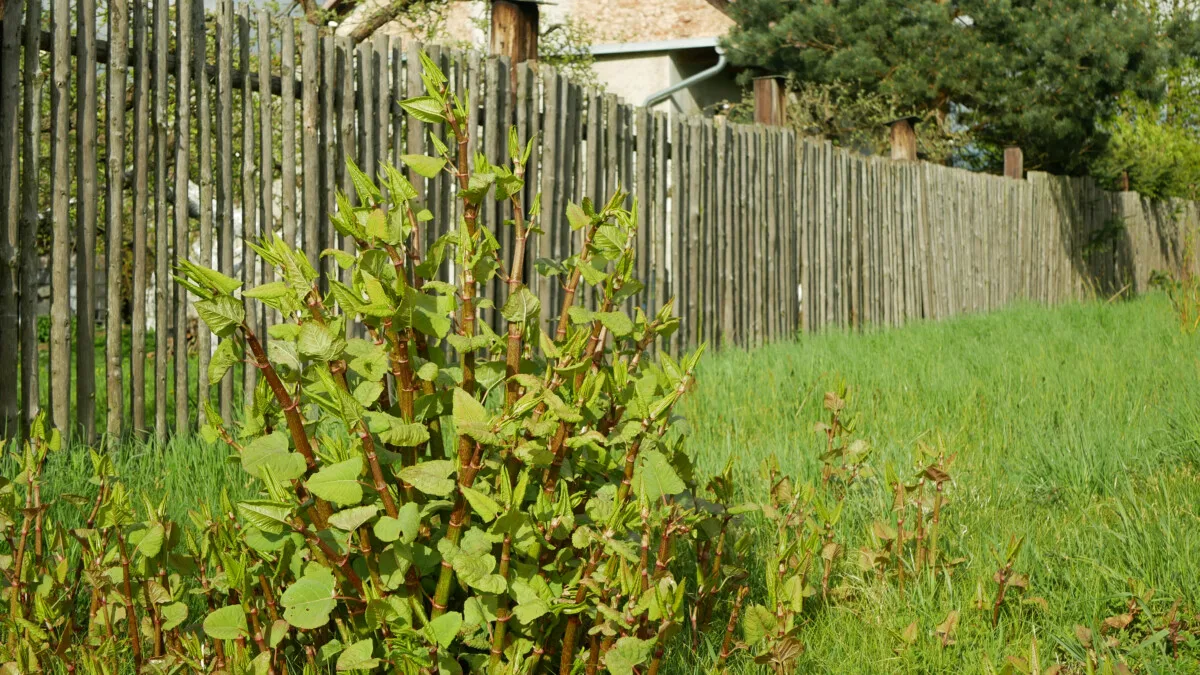
I used excessive amounts of boiling water to drench their root systems and growing sites.
Nevertheless, Japanese knotweed persisted.
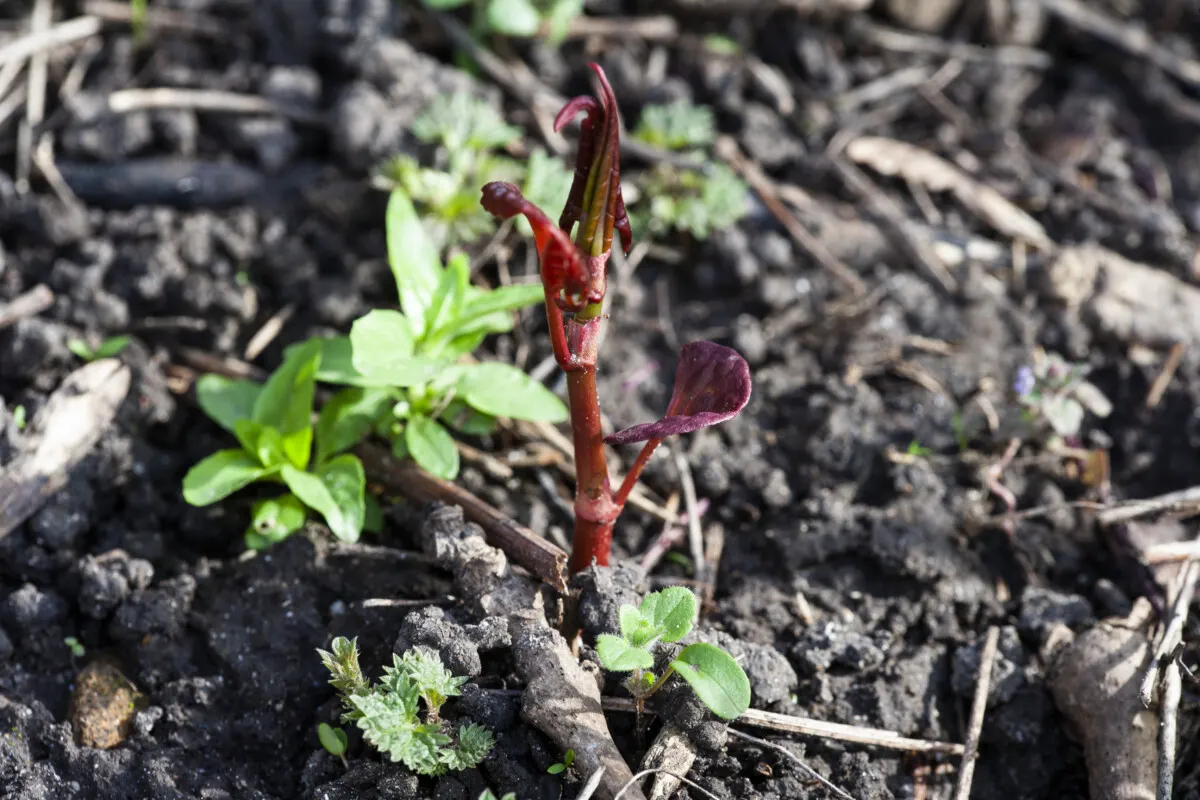
Japanese knotweed is truly the most tenacious of weeds. You can slow it down, you can weaken it, you can curb its spread. But get rid of it forever? Next to impossible.
Japanese Knotweed – the Hardy Plant with Staying Power
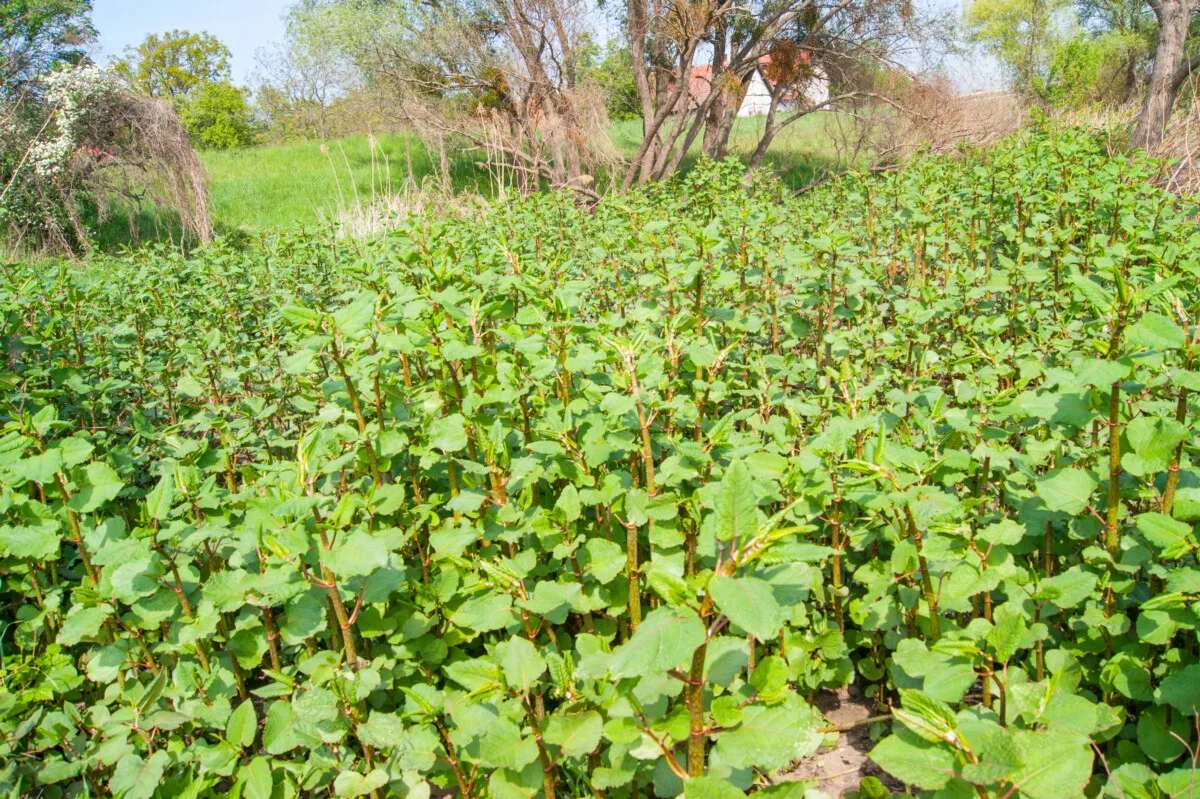
Japanese knotweed (Fallopia japonica) is a perennial herbaceous plant in the buckwheat family. In its native range of eastern Asia, it is a ruderal species that’s one of the first plants to grow after a major land disturbance. In Japan, it springs up on lava fields and between rock fragments left at the base of mountainous slopes after a volcanic eruption.
The side of a volcano is probably one of the most hostile places for a plant to be. There it will need to stand up to landslides and flooding, having its foliage repeatedly covered in volcanic ash, and be capable of thriving in the poorest quality soils under droughty conditions. Because of these adaptations, Japanese knotweed is an absolute beast when it grows in much more favorable settings.
In its homeland, it’s kept in check by other vigorous growers like bamboo and silvergrass that compete for space. It also has its very own specialized jumping lice predator – the Japanese knotweed psyllid – that defoliates the plant and depletes its energy for growth and rooting.
Outside of the checks and balances of its native habitat, Japanese knotweed ranks as one of the most invasive species in the world.
Bringing Japanese knotweed to Europe, what could possibly go wrong?
We have one person to blame for the scourge of Japanese knotweed: Phillip Franz von Siebold, a German physician, botanist, and explorer.
Arriving in Japan in 1823, von Siebold collected and shipped around 2,000 plant species to Europe over his 8-year stay. To be fair to ol’ Phillip Franz, he sent off many specimens still prized in gardens today, including maple and cherry blossom trees, hosta, hydrangea, wisteria, iris, clematis, and peony.
Little did he know that when he scooped up a sample of Japanese knotweed from Mount Unzen in Nagasaki Prefecture, he would be unleashing the ire of gardeners across multiple generations, the world over.
Japanese knotweed became commercially available in Europe in 1848 after receiving a gold medal for the “most interesting new ornamental plant” by the Society of Agriculture & Horticulture at Utrecht. Boasting its great vigor, beauty, and medicinal uses, it was marketed as a windbreak, nourishing animal fodder, and fixer of eroding soil. An exotic plant with such traits was very appealing to the Victorian gardener, fetching 20 times the price as wisteria.
The first rumblings that Japanese knotweed was nothing but trouble came in 1899, when growers began noting its weediness and spread. By the time the 1930s rolled around, it was given the name “Hancock’s Curse” after a plant proprietor in Britain.
But the genie was well out of the bottle at that point. Japanese knotweed had escaped cultivation and gone on to establish itself throughout Europe, Australia, New Zealand, most of Canada, and in 42 of 50 US States.
How Japanese Knotweed is the Perfect Invader
The evolutionary training that Japanese knotweed received on the volcanic plains has ensured this plant is really tough to kill.
Though it grows most vigorously in full sun, it can withstand deep shade as well. It has no issue flourishing in a variety of soils, and it seems the poorer the better. Preferring wetlands and other moist milieus, Japanese knotweed isn’t at all phased by acidity, salinity, or soils contaminated with heavy metals and pollutants. It’s drought and heat resistant too, and the roots can survive temperatures as low as -31°F (-35°C).
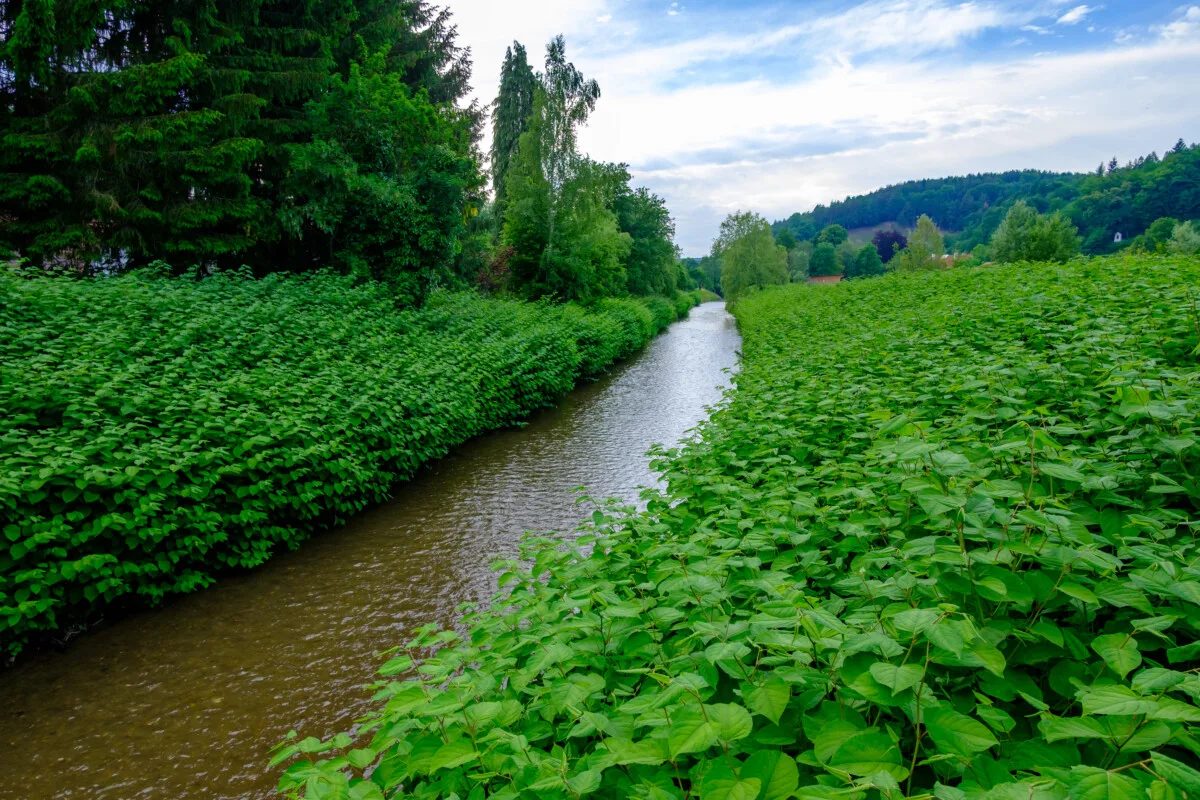
Japanese knotweed forms thick leafy stands, growing as much as 3 inches each day and reaching up to 10 feet in height by midsummer. It grows so fast and dense that it outcompetes native plants in the wilderness, with fewer invertebrates, amphibians, birds, and mammals found in places that Japanese knotweed has colonized.
If it didn’t grow so aggressively, it would indeed be a handsome shrub. The main stalk looks similar to bamboo, hollow and smooth, about one inch in diameter, and is mostly green with flecks of purple. The leaves are oval-shaped with pointed tips and run alternately down red-tinged stems that trail gracefully from the stalk.
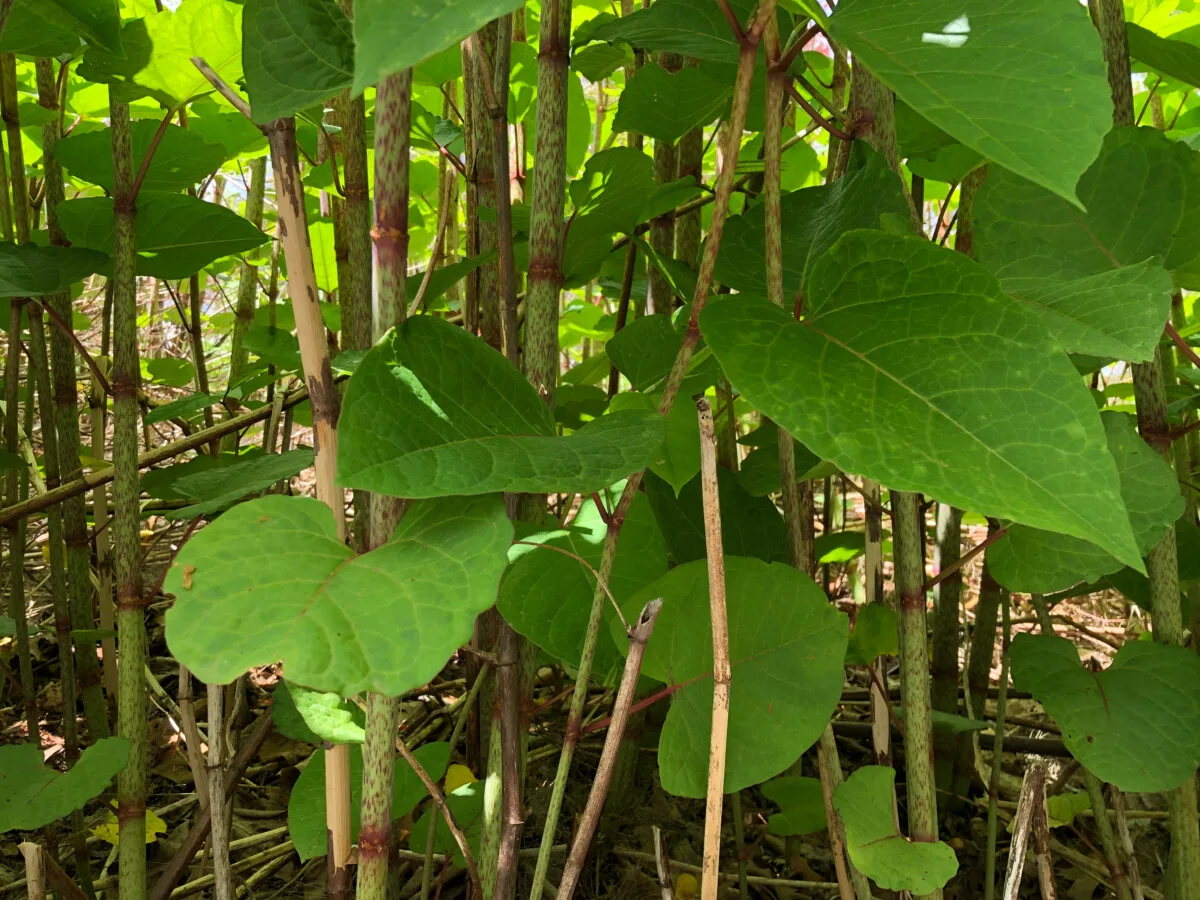
Small white flowers bloom in panicles in July or August, and resemble tiny versions of astilbe. As a dioecious plant, it requires male and female flowers to produce viable seed. Much of the Japanese knotweed present in North America is believed to be sterile clones – however, the flowers can be pollinated by related invasive plants, like giant knotweed and bohemian knotweed.
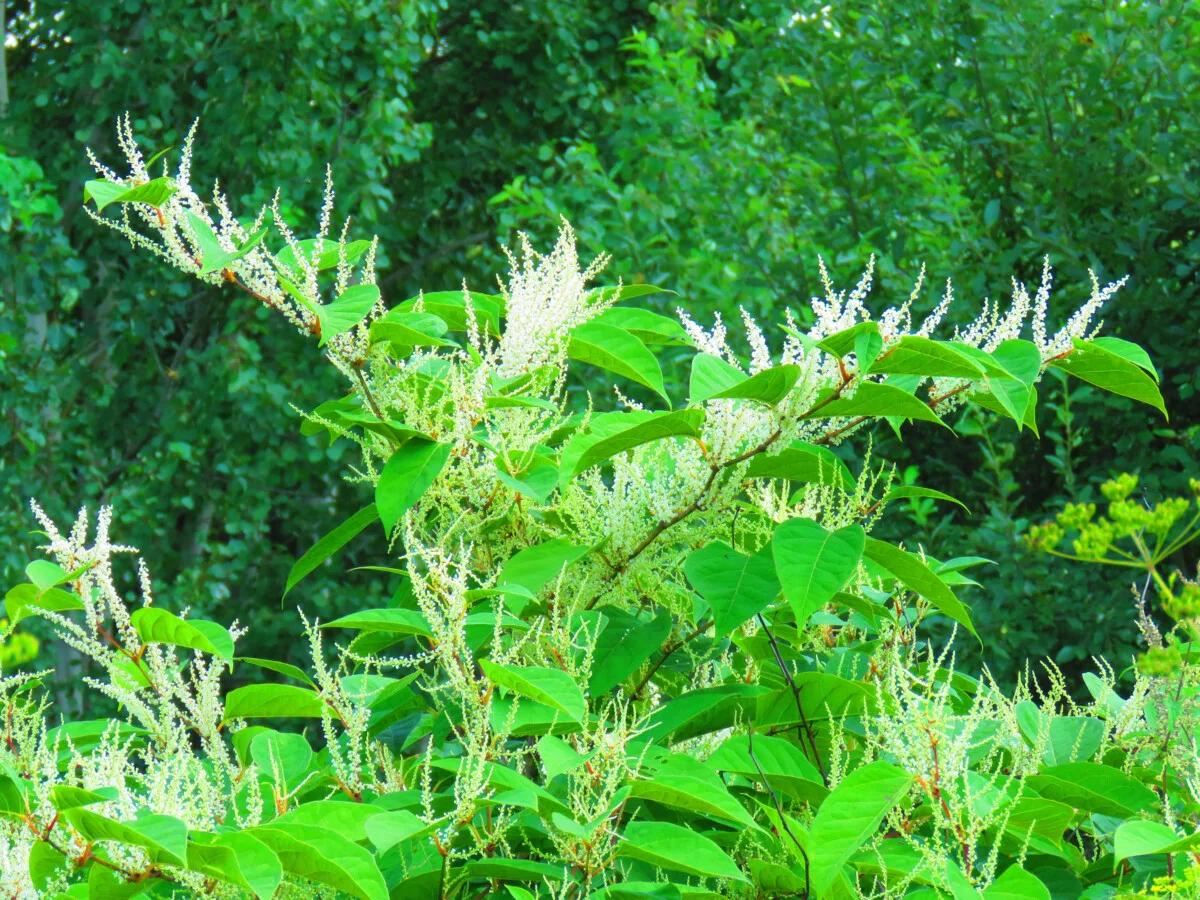
The ultra-fast growth up top is just a fraction of what’s going on beneath the surface.
The primary way that Japanese knotweed spreads is through its massive network of rhizomes. The underground root system accounts for 2/3 of the plant’s total mass.
The woody roots, dark brown on the outside and bright orange on the inside, are ridiculously hardy. Growing through asphalt and concrete like butter, the roots can tunnel 6 feet deep and reach 65 feet or more in length. Root fragments as small as 1 cm can spawn a whole new plant in only 6 days.
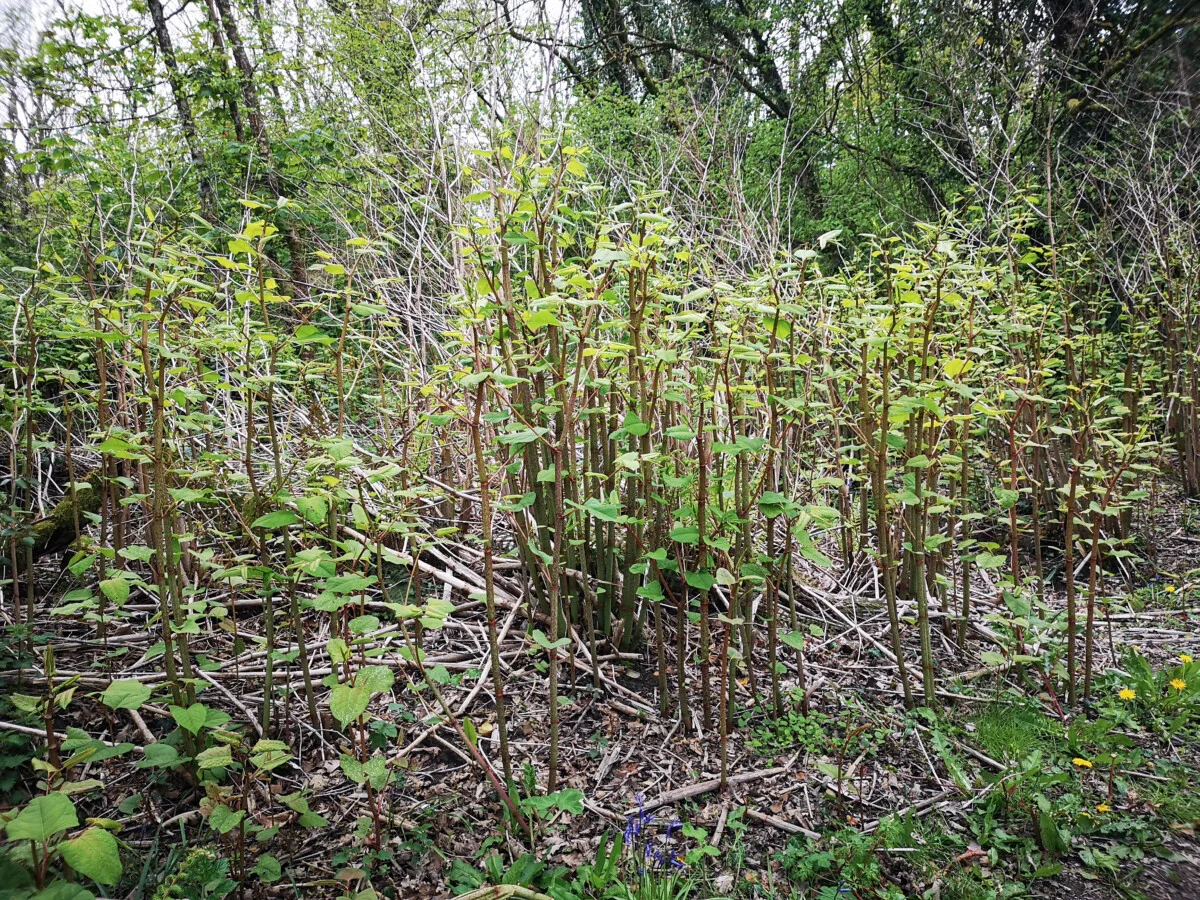
Japanese knotweed dies back each fall, leaving dead stalks standing over winter. Where one stalk overwinters, numerous new shoots will emerge from the same spot in spring. As the parent plant grows, it sends out a multitude of underground runners that bear new shoots. The juvenile sprouts look a little like asparagus, purplish and green, and push up basically anywhere and everywhere.
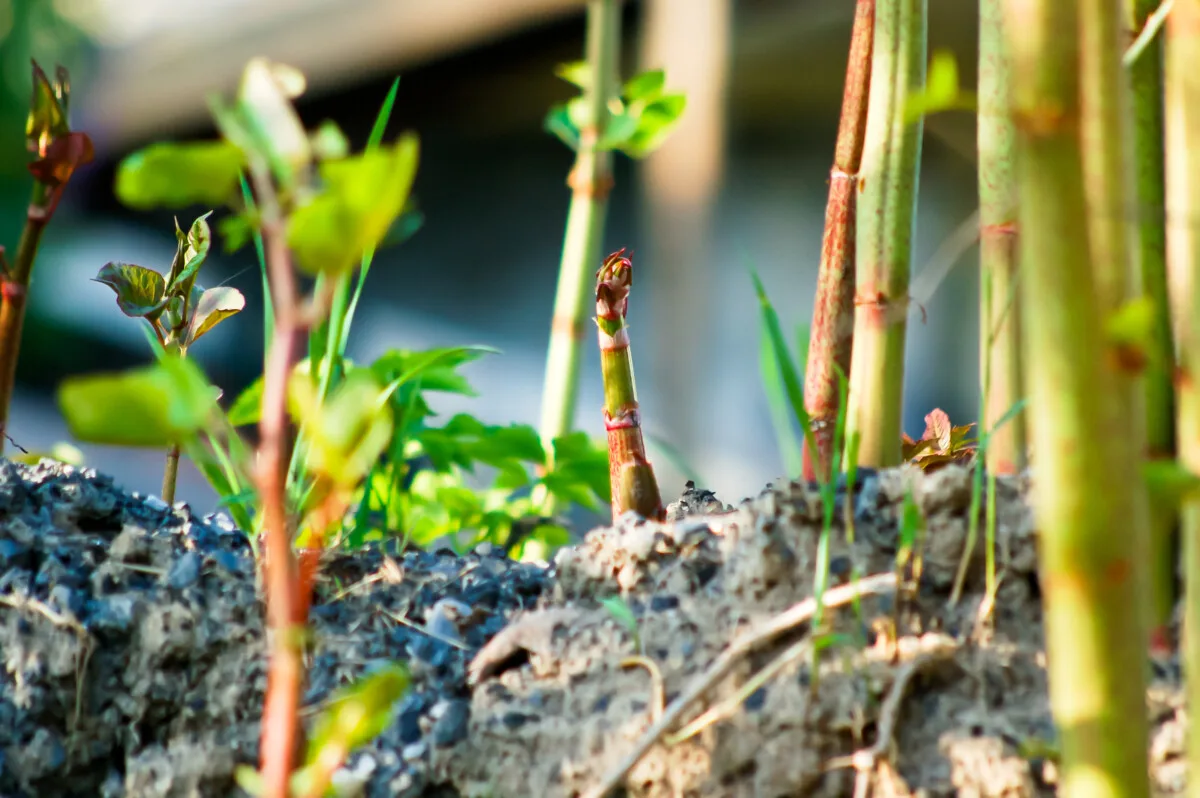
Controlling Japanese Knotweed – the 5 Year Plan
To truly eradicate Japanese knotweed, you would need to remove the entirety of its sprawling and interconnected root system. This is no small feat, as leaving behind a bit of root slightly larger than a quarter-inch is enough to reverse any progress you’ve made.
So far, there’s only one proven method to quickly and effectively eliminate the root mass: full-scale excavation. This involves digging pits 10 feet deep with heavy machinery and disposing of the tainted soil like it’s hazardous waste. Not exactly doable in most suburban backyards!
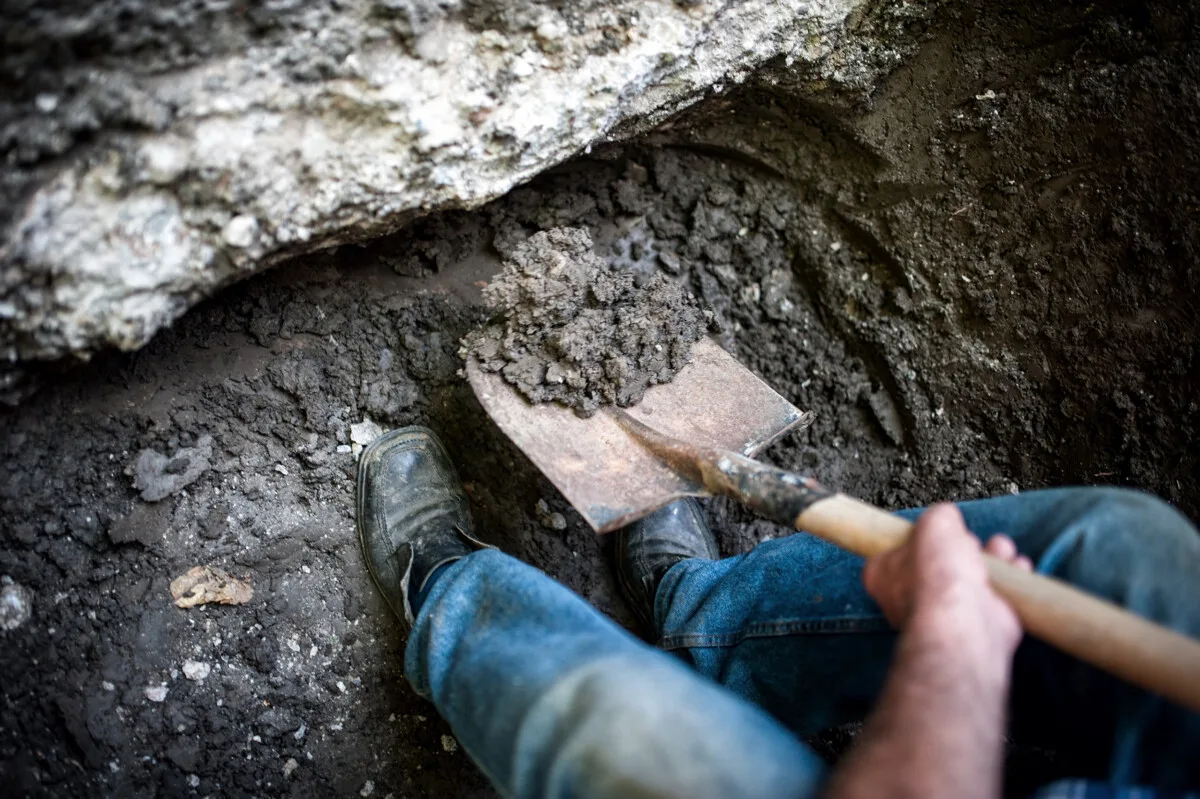
Rather than shooting for total annihilation, your efforts to manage Japanese knotweed should be slow and steady.
A consistent combination of these control measures will deplete the rhizomes over time, leaving them with less energy to sprout new shoots. Only do them once, though, and Japanese knotweed will explode with renewed purpose. It’ll take a commitment of at least 5 years – and maybe up to 10 for large and well-established populations.
With Japanese knotweed, it can feel like you’re playing whack-a-mole. Focus your efforts first on containment. Remove the satellite sprouts to prevent spread before taking on the more mature plants.
Cutting
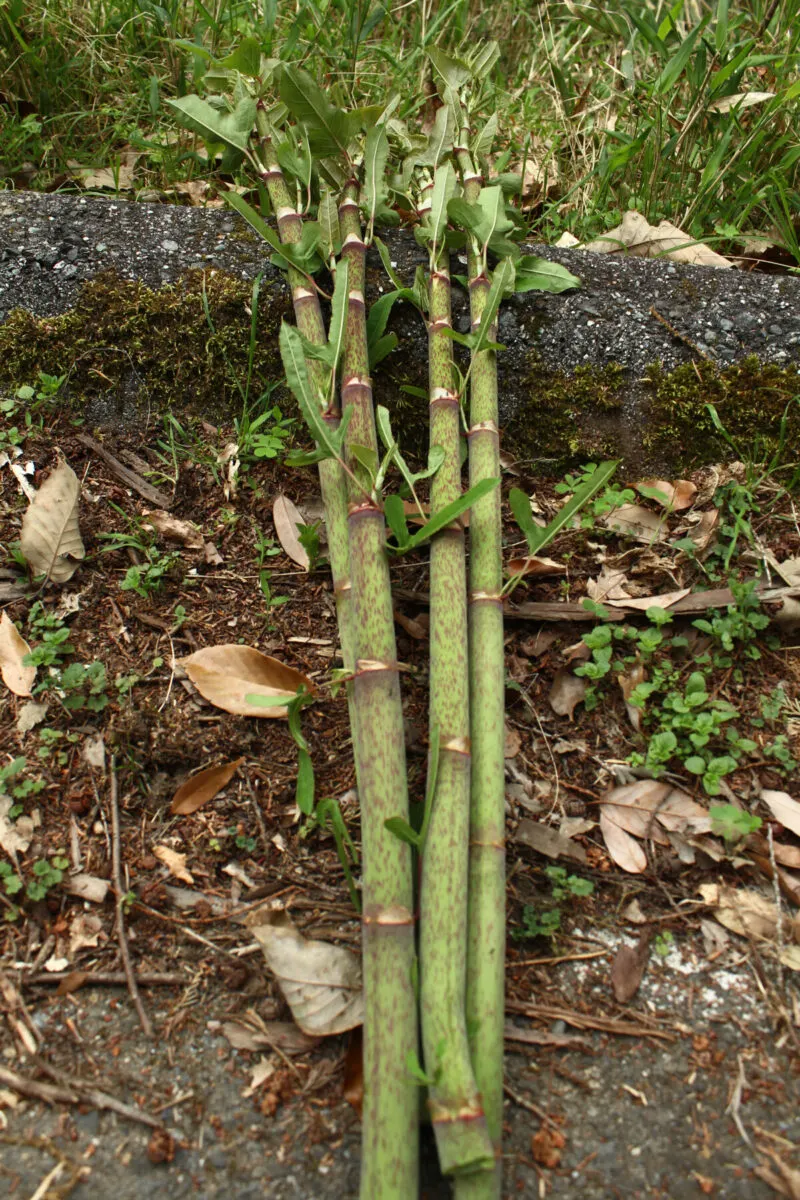
Cutting down plants once will only make them stronger. But consistently chopping down any and all Japanese knotweed growth you see will, ever so slowly, weaken the rhizomes below.
It’s not an effective method on its own, but keeping sprouts and shoots cut down to ground level can be a good part of your overall Japanese knotweed strategy.
Removing the above ground growth won’t touch the roots, but it will reduce the plant’s energy reserves. Freshly snipped plants will allocate their resources towards regrowth instead of spread. When the plant sprouts again (and it will), its growth will be stunted to 3 or 4 feet.
Every time you cut back Japanese knotweed, you’re limiting the plant’s potential. It will take years of repeated cuttings to make a difference, which is why it’s so important to take a multi-pronged approach.
Digging
Japanese knotweed is always encroaching. When it’s happy, it sends out runners that radiate out from the parent plant like spokes on a wheel. Every new sprout has the potential to do the same – so you can just imagine the exponential growth!
The newest clones, freshly risen from the soil for the first time, have small rhizomes that are the easiest to remove. These young roots will be connected to slightly older and larger rhizomes, which in turn are connected to even larger ones. You can follow the runners, digging up root clumps as you go.
Take extra care when digging up the roots. Keep the rhizomes whole as much as possible and leave no bits of root behind.
When the roots go too deep into the soil, sever the connecting runner cleanly with loppers. At this point, I would dump boiling hot water into the hole for good measure. This extra step seemed to help stop the rhizomes from quickly rebounding with fresh growth.
Tarping
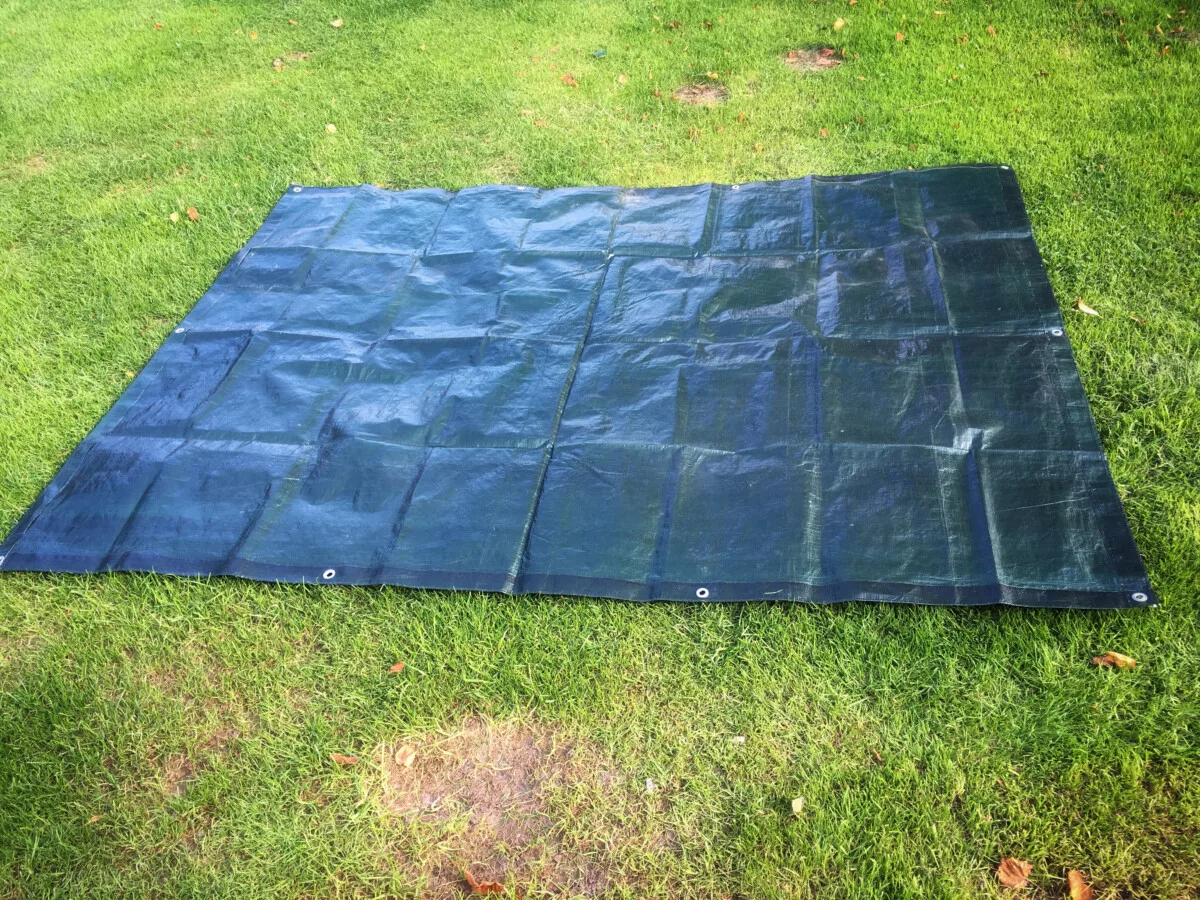
The older the roots of Japanese knotweed, the thicker and woodier they become. Almost like tree roots, they don’t come up readily. When your Japanese knotweed has been there awhile, or has formed dense clusters of plants, soil solarization is a more practical option than digging.
Tarping over the infested sites will simultaneously block out sunlight and cook the root system. It works best in sunny locations so the soil will heat up enough to kill the rhizomes.
Start tarping Japanese knotweed in late spring. Cut all the stalks down to the soil line and cover the growing site with a dark-colored, heavy-duty tarp. The cover should be somewhat larger than the colony itself to prevent shoots from growing laterally to find the light.
Japanese knotweed sprouts have been known to punch through a tarp so make sure you lay the cover over the soil loosely. Leaving an inch or two of slack, weigh down the corners and edges with rocks or tent pegs to stop the tarp from blowing away.
For solarization to work against Japanese knotweed, you’ll need to leave the tarp in place for at least 3 growing seasons. As you wait, keep monitoring the site and remove any shoots that poke out past the edges. Check for tears in the sheet and patch them up right away so that the roots don’t gain any benefit from light and air flow.
Remediating the Soil
Solarizing Japanese knotweed growing sites for three years will have the unfortunate side effect of destroying all the beneficial microbes in the soil too. And as if this plant wasn’t overpowered enough, it exudes chemicals from its roots that makes the soil less hospitable to other plant life.
Once an area has been cleared of Japanese knotweed, you’ll need to fix the soil and make it into a place where plants want to be.
Re-introduce good soil microbiota by deeply mulching the site. Use organic matter like leaf mold or wood chips to give the bacteria and fungi the fuel they need to grow and multiply.
It’s also a good idea to heavily replant the area to suppress Japanese knotweed (and other undesirable weeds) from sprouting. Crowd the space with native plants that have thick, deep, and dense roots. Wildflowers like black-eyed Susan, purple coneflower, sunchoke, goldenrod, and butterfly weed are lovely, hardy plants with large and robust root systems.
Safely Disposing Japanese Knotweed
As you cut and dig away at the problem of Japanese knotweed, you’ll collect heaps of leafy branches, stems, and rhizomes. Don’t compost any part of Japanese knotweed, ever.
Treat it like the biohazard it is by placing all plant materials in thick black plastic bags. Seal the bags up tightly and leave them in full sun for 2 weeks. When the contents are thoroughly dried, you can burn them or put the bags out with the trash.
Accepting that Japanese Knotweed is Here to Stay
Japanese knotweed is so vigorous and abundant that it’s pretty well unmatched in the weed department. The plant’s drive to survive is almost admirable, really.
I eventually came around to the idea that I would need to learn to live alongside my patch of Japanese knotweed. Despite all the pulling, cutting, and digging, it always came back. My efforts to control it weren’t completely in vain though. With consistency and persistence, its occupancy of my growing spaces became less and less over time
There is one silver lining with Japanese knotweed – it’s free food.
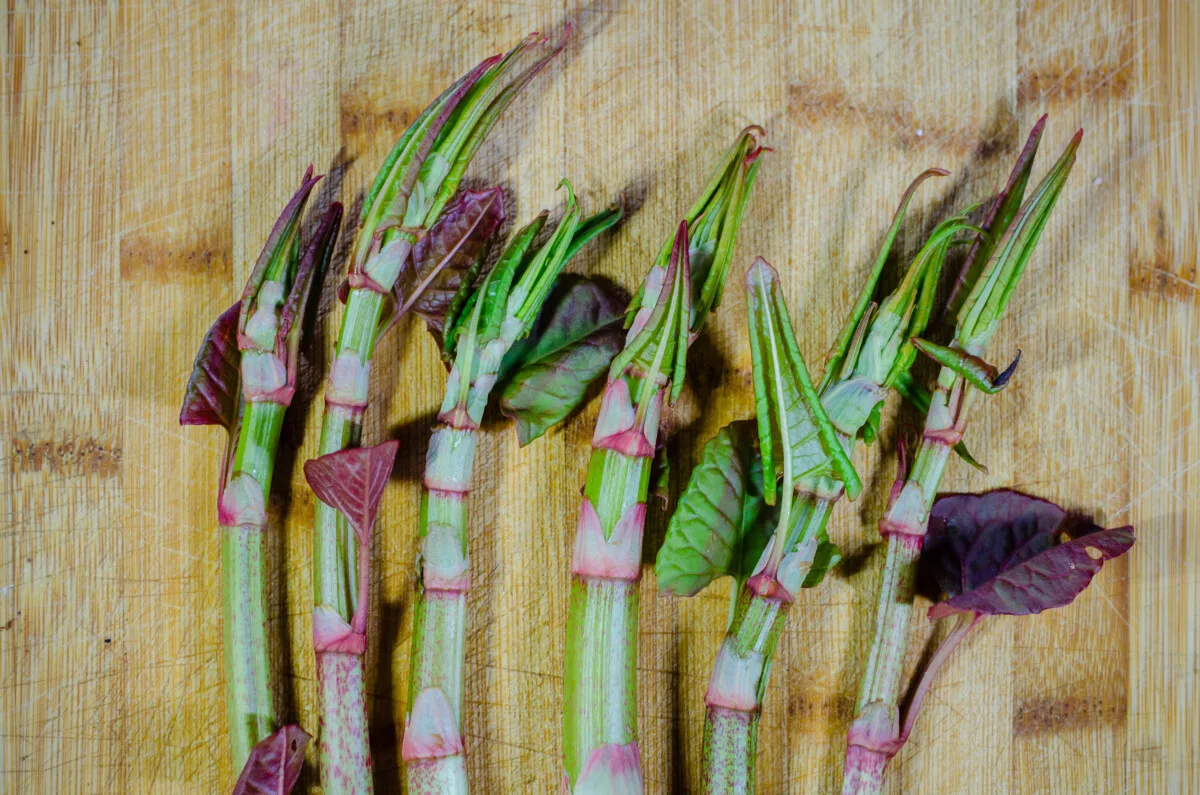
The juvenile sprouts, the hollows stalks, and the green leaves are all totally edible. Nutritious, even, since the plant is quite rich in resveratrol and other antioxidants.
Japanese knotweed has tartness similar to rhubarb, imparting a lemony flavor to food and drink. The youngest shoots that pop up in early spring are the most tender. Older stalks, taller than a foot, have a tougher outer skin that can be scraped off with a peeler. Either young or old, Japanese knotweed can be enjoyed raw, sautéed, grilled, pickled, and sweetened.
So when you can’t beat ‘em, eat ‘em:
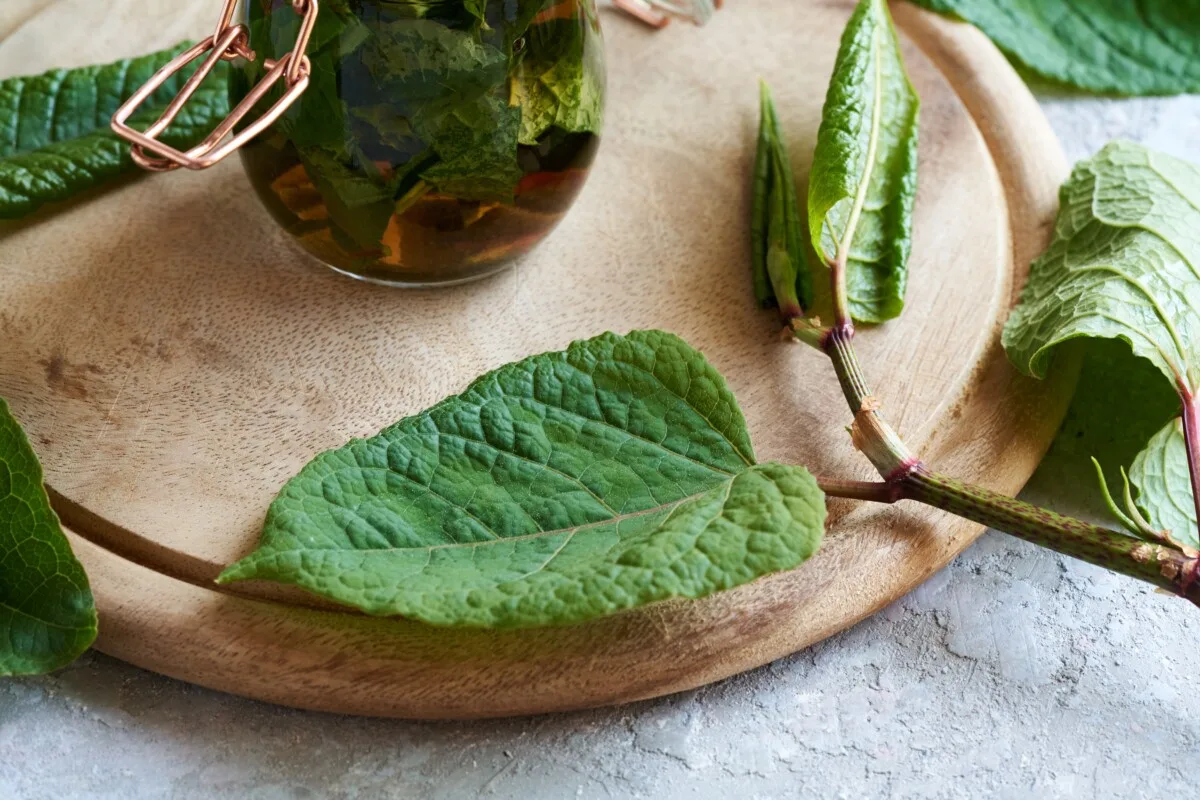
- Japanese knotweed hummus
- Japanese knotweed salsa verde
- Japanese knotweed pickles
- Japanese knotweed syrup
- Japanese knotweed jelly
- Sweetened Japanese knotweed puree
- Japanese knotweed sorbet
- Japanese knotweed quiche
- Sour Japanese knotweed soup
- Japanese knotweed risotto
- Knotweed, cucumber & avocado gazpacho
- Japanese knotweed pie
- Strawberry knotweed crisp
- Apple knotweed fruit leather
- Japanese knotweed wine

Get the famous Rural Sprout newsletter delivered to your inbox.
Including Sunday ramblings from our editor, Tracey, as well as “What’s Up Wednesday” our roundup of what’s in season and new article updates and alerts.


